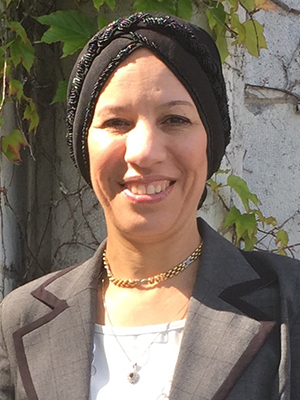Queen’s research shedding new light on blood clots
October 15, 2021
Share
Queen’s researcher and professor Maha Othman (Biomedical and Molecular Science) has been fascinated by blood since she realized it is involved in almost every human disease, regardless of the body organ or system. She trained in clinical pathology with a specialization in hematology and hemostasis — bleeding and clotting disorders. She now uses this knowledge to improve diagnosis and management of rare bleeding disorders and better assess the risk of pregnancy and cancer-associated blood clots.

Dr. Othman’s research going as far back as 15 years ago is once again being debated and discussed in major publications such as Nature, as reports of blood clots associated with certain COVID-19 vaccines began occurring. Vaccine-induced immune thrombotic thrombocytopenia (VITT) — a blood clot following a vaccine — is a very rare side effect that happens in a subset of population following AstraZeneca and Johnson and Johnson’s Janssen COVID-19 vaccination.
“I must emphasize that the incidence of VITT is extremely low and the risk of death and serious outcomes of COVID-19, including thrombosis, far outweigh the risk of VITT,” says Dr. Othman. “Public education and transparency are key. The pandemic is still evolving and research findings are updated daily so we need to be both patient and open to new theories.”
The main question that researchers are asking is what triggers VITT and why it has been diagnosed follow AstraZeneca and Janssen vaccinations but not the other vaccines. AstraZeneca and Janssen vaccines use adenovirus as the vehicle to deliver DNA code for viral protein, which triggers the immune system to create the protective antibodies against COVID-19. This is different from vaccines like Moderna and Pfizer which deliver mRNA for that protein directly rather than via the adenovirus vehicle.
A decade and a half ago, Dr. Othman was a postdoctoral researcher in the lab of David Lillicrap, a Queen’s professor and Canada Research Chair in Molecular Hemostasis. Dr. Othman spent three years examining the direct interaction and effects of adenovirus with blood platelets and coagulation. She found that adenovirus could stimulate and overwork the platelets so they couldn’t regenerate fast enough, causing thrombocytopenia — a low level of platelets. However, the stimulated platelets could also activate the clotting system, which could then increase a person’s risk for blood clots.
“We knew 15 years ago that adenovirus vectors in the blood can stimulate platelets, trigger blood clotting and causes thrombocytopenia — but even to me, I didn’t connect the dots, until VITT was reported with two, not one, COVID-19 vaccines with adenoviral technology,” says Dr. Othman.
Her paper from over a decade ago has been cited in nearly all of the papers coming out about VITT. In less than two months this past spring over 30 articles were published on VITT.
Dr. Othman thinks adenovirus must play a role, at least partially, into why VITT shows up after AstraZeneca and Janssen vaccinations but not the other vaccines.
She recently collaborated with an expert international group of hematologists, laboratory scientists, virologists and vaccinologists, including Dr. Lillicrap and led a new paper in the Journal of Thrombosis and Haemostasis. It looks at VITT and discusses seven potential reasons behind the condition.
“The good news is we now know how to diagnose and how to treat the condition. By the end of this year, we are likely to establish a pathogenic model that helps us better understand and even prevent VITT,” says Dr. Othman. “I still believe the benefits of vaccination outweigh the risks of having side effects of vaccines, and I encourage people to get their vaccination if not already done so to protect themselves and their communities.”